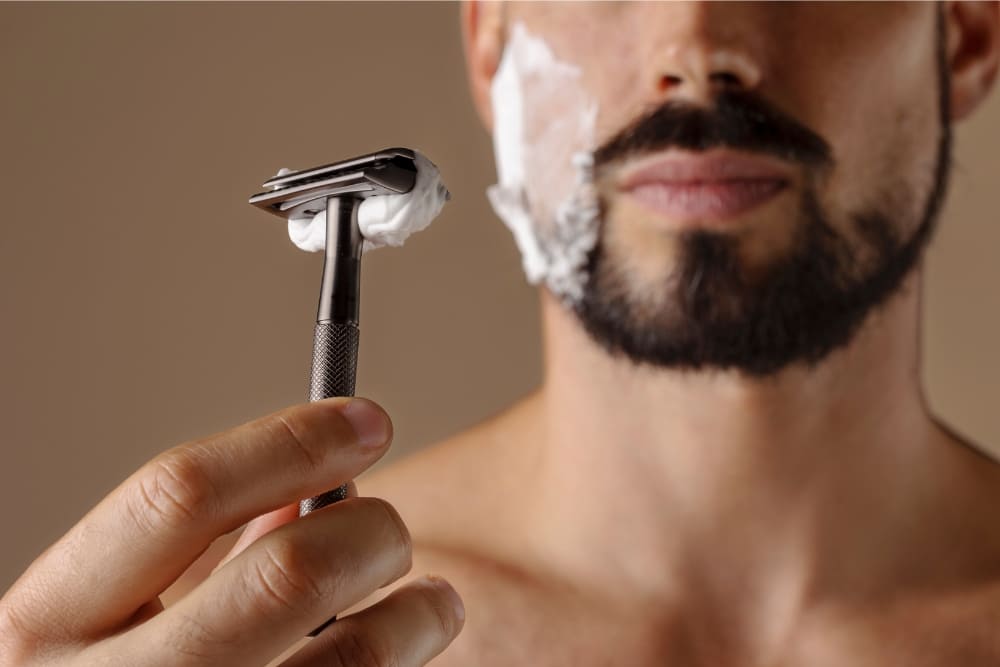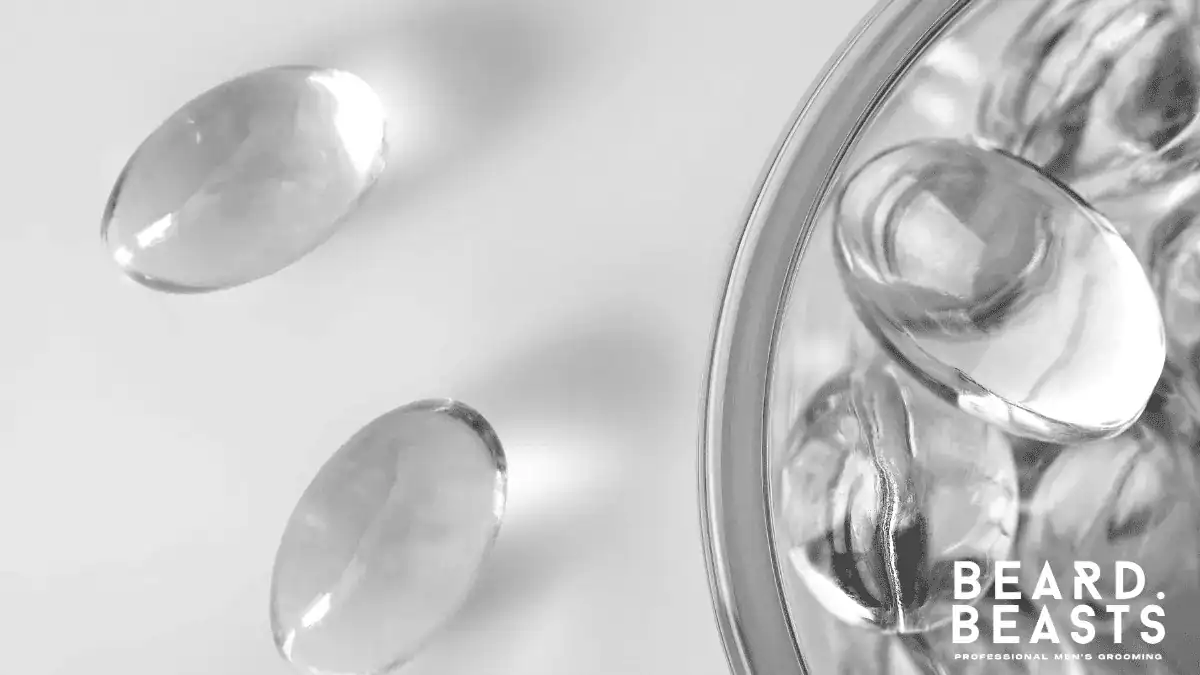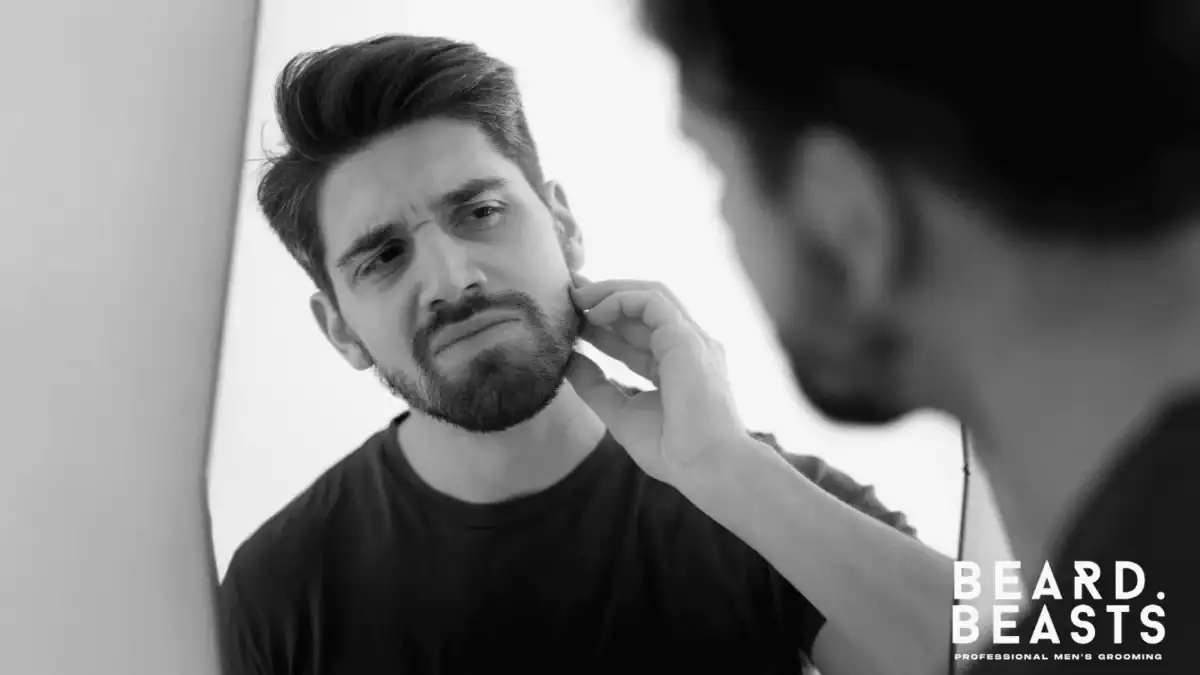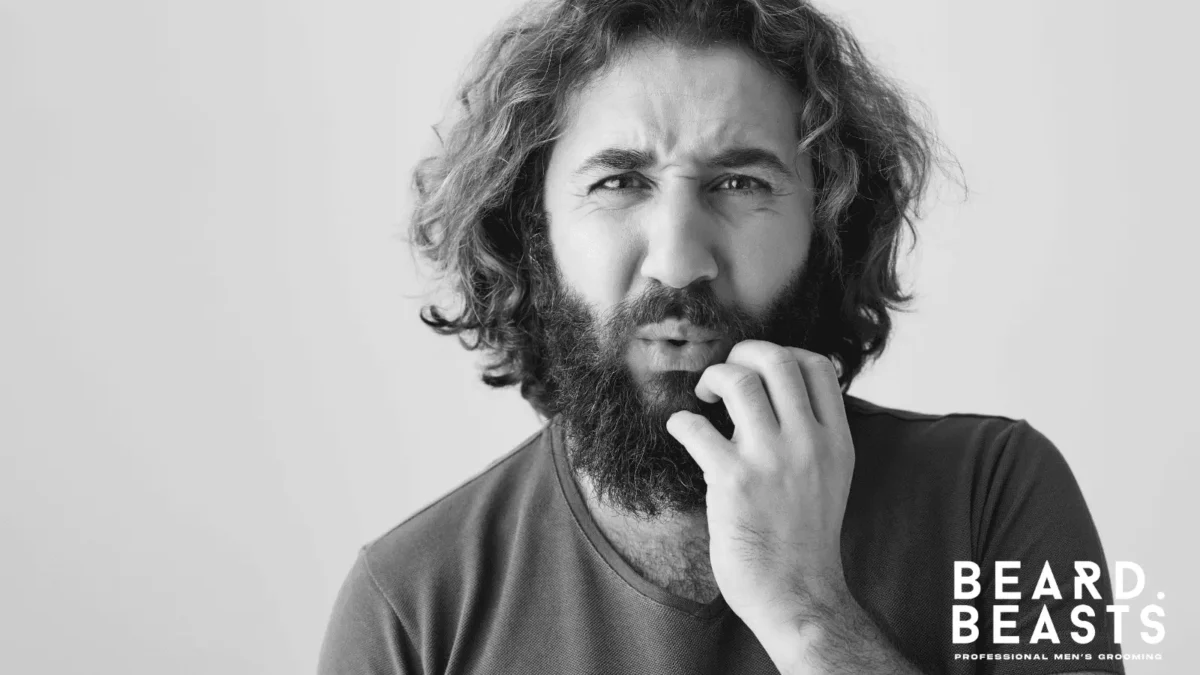Ingrown beard hair is a common and irritating problem for many men, causing discomfort and sometimes infection. This guide offers practical solutions for managing and preventing ingrown beard hair, from simple home remedies to professional treatments.
We’ll explore the causes, including shaving techniques and skincare, and explain when to seek expert help. Whether you’re dealing with a single ingrown hair or seeking long-term prevention, this article will help you achieve a smoother, healthier beard.
Causes of Ingrown Beard Hairs

Several factors contribute to the development of ingrown beard hair:
- Improper Shaving: Shaving too closely, against the grain, or with a dull blade are common culprits. These practices can cause the hair to be cut below the skin’s surface, increasing the likelihood of it curling back and becoming trapped as it regrows. Applying excessive pressure while shaving can also exacerbate this issue.
- Hair Type: Men with naturally curly or coarse beard hair are more susceptible to ingrown hairs. The natural curl of the hair makes it more prone to re-entering the skin.
- Insufficient Exfoliation: A buildup of dead skin cells can clog hair follicles, preventing hairs from growing out properly. This blockage increases the chance of hairs becoming trapped and ingrown.
- Clogged Pores: Similar to insufficient exfoliation, clogged pores due to dirt, oil, and dead skin cells create an environment conducive to ingrown hairs.
- Genetic Predisposition: Genetics can play a role. Inherited factors like hair texture, thickness, and growth patterns can influence the likelihood of developing ingrown beard hair.
These contributing factors often interact, making a combination of proper grooming techniques and skincare essential for preventing ingrown beard hair.
Symptoms to Look Out For
Recognizing the symptoms of ingrown beard hair is crucial for effective management. Common signs include:
- Redness and Irritation: The skin surrounding the ingrown hair often becomes inflamed, appearing red and feeling tender to the touch.
- Itchy or Painful Bumps: Small, raised bumps may develop, which can be itchy, painful, or both, especially when touched or irritated by shaving.
- Pustules (Pus-Filled Bumps): In some cases, the ingrown hair can become infected, leading to the formation of pustules, which are bumps filled with pus.
- Hyperpigmentation (Darkened Skin): Some individuals may experience hyperpigmentation, or darkening of the skin, in the area surrounding the ingrown hair.
If you experience these symptoms, especially if they are persistent or worsen, it’s important to take appropriate action, which we will discuss in the following sections. Early recognition and intervention can help prevent further complications.
Prevention Strategies for Ingrown Beard Hair
Preventing ingrown beard hair relies on a combination of proper shaving techniques, a consistent skincare routine, and healthy habits.

Effective Shaving Practices:
- Prepare the Skin: Always begin with warm water to soften the beard hair, making it easier to cut. Apply a moisturizing shaving soap or gel to reduce friction and help prevent hairs from curling back into the skin. Avoid shaving dry.
- Shave with the Grain: Shave in the direction of hair growth. While this might not provide the closest shave, it significantly reduces the risk of ingrown hairs. Prioritize a safe shave over an extremely close one.
- Use Sharp Blades: Use a sharp, clean razor blade. Dull blades can pull at the hair, increasing the likelihood of ingrown hairs. Replace blades regularly.
- Post-Shave Care: After shaving, apply a soothing, alcohol-free aftershave balm or lotion to minimize irritation. Alcohol-based products can dry out the skin, potentially exacerbating the problem.
Skincare Routine:
- Exfoliate Regularly: Exfoliation is crucial for removing dead skin cells that can clog hair follicles. Gently exfoliate two to three times a week using a mild scrub or exfoliating brush. This helps prevent hairs from becoming trapped beneath the skin’s surface. Brushing your beard with a nylon-bristled brush can also provide gentle exfoliation.
- Moisturize Daily: Keeping the skin hydrated is essential. Dry skin can create a barrier that traps hairs. Use a beard oil formulated for your skin type.
Beneficial Ingredients:
Look for skincare products containing ingredients known to soothe and reduce inflammation, such as:
- Aloe vera
- Tea tree oil
For exfoliation, consider products containing:
- Salicylic acid
- Glycolic acid
Lifestyle Considerations:
While not a direct preventative measure for ingrown hairs, maintaining a healthy lifestyle contributes to overall skin health. This includes a balanced diet and adequate hydration.
By incorporating these preventative strategies into your daily routine, you can significantly reduce the occurrence of ingrown beard hair and maintain a healthier, more comfortable beard.
Home Remedies for Ingrown Beard Hair
For mild cases of ingrown beard hair, several home remedies can provide relief and promote healing:
Exfoliation:
Regular exfoliation is key to preventing and addressing ingrown hairs. Homemade scrubs can be a gentle and effective option:
- Sugar Scrub: Mix granulated sugar with a carrier oil like olive or coconut oil to create a gentle exfoliating scrub.
- Coffee Scrub: Combine ground coffee with a carrier oil for a more invigorating scrub.
Gently massage the chosen scrub onto the affected area in circular motions two to three times a week. Rinse thoroughly with warm water. Avoid harsh scrubbing, as this can irritate the skin.
Soothing Treatments:
Certain natural ingredients can help soothe irritated skin and reduce inflammation:
- Aloe Vera: Apply pure aloe vera gel directly to the affected area to reduce redness and swelling.
- Tea Tree Oil: Due to its antibacterial properties, diluted tea tree oil can help prevent infection. Mix a few drops of tea tree oil with water or a carrier oil before applying to the affected area. Always perform a patch test before applying tea tree oil to ensure you don’t have an allergic reaction.
Apply these soothing treatments after exfoliating or shaving, or as needed for relief.
Warm Compresses:
Applying a warm compress can help soften the skin and encourage the ingrown hair to release:
- Soak a clean cloth in warm (not hot) water.
- Wring out the excess water.
- Apply the warm compress to the affected area for several minutes.
- Repeat this process several times until the skin softens.
The warmth from the compress increases blood circulation, which can reduce swelling and help the hair break through the skin. This method can be used daily.
These home remedies can offer effective relief for mild ingrown beard hair. However, if symptoms persist or worsen, seeking professional advice is recommended.
Professional Treatment Options for Ingrown Beard Hair
While prevention and home remedies are often sufficient, some cases of ingrown beard hair require professional intervention. This section outlines when to seek professional help and the available treatment options.
When to Consult a Professional:
It’s advisable to consult a dermatologist if you experience:
- Persistent or recurring ingrown hairs
- Severe redness, swelling, or pain
- Signs of infection, such as pus-filled bumps
These symptoms may indicate a more serious condition or require medical treatment.
Potential Complications:
Untreated or severe ingrown hairs can lead to complications, including:
- Scarring
- Skin discoloration (hyperpigmentation)
- Cyst formation
- Pseudofolliculitis barbae (a chronic inflammatory condition of the hair follicles)
Dermatological Treatments:
A dermatologist can offer several treatment options:
- Laser Hair Removal: This treatment targets hair follicles, reducing hair growth and altering hair texture to minimize ingrown hairs. Multiple sessions are typically required for optimal results.
- Prescription Medications: Dermatologists may prescribe topical antibiotics to treat infections or retinoid creams to promote skin cell turnover and prevent ingrown hairs.
The Role of a Barber:
A skilled barber can also play a role in preventing ingrown hairs by:
- Providing Shaving Guidance: A barber can offer expert advice on proper shaving techniques, tools, and products suitable for your specific skin and hair type.
- Beard Shaping and Maintenance: Regular beard trims and shaping by a barber can help minimize skin irritation and prevent hairs from curling back into the skin.
Seeking professional help for ingrown beard hair not only addresses the current issue but can also provide valuable insights and practices for long-term prevention.
Frequently Asked Questions
Here are answers to some common questions about ingrown beard hair:
Can beard oil help prevent ingrown hairs?
Yes, beard oil can be beneficial. By moisturizing the skin and softening the beard hair, it reduces the likelihood of hairs curling back into the skin. Look for beard oils containing natural ingredients like jojoba or argan oil.
Are there any specific vitamins or supplements that can reduce the risk of ingrown beard hairs?
While no specific vitamin or supplement directly prevents ingrown hairs, supporting overall skin health can be helpful. A balanced diet rich in vitamins A, C, and E, as well as omega-3 fatty acids, contributes to healthy skin.
How often should I exfoliate my beard area to prevent ingrown hairs?
Exfoliating two to three times a week is generally recommended. However, over-exfoliation can irritate the skin, so adjust the frequency based on your skin’s sensitivity.
Can ingrown hairs lead to more serious skin conditions?
Yes, untreated ingrown hairs can lead to complications such as skin infections, cysts, and scarring. If you experience severe redness, pain, or pus, consult a dermatologist or other healthcare professional.
Are electric razors better for preventing ingrown hairs than manual razors?
Electric razors can be less irritating for some because they don’t cut as close to the skin as manual razors. This can be advantageous for those with sensitive skin or curly beard hair who are prone to ingrown hairs. However, both types of razors can cause ingrown hairs if used improperly.
How can I differentiate between ingrown hairs and acne in the beard area?
Ingrown hairs typically appear as small, often round bumps, sometimes with a visible hair at the center. Acne, on the other hand, usually presents as red, inflamed spots, whiteheads, or blackheads without a visible hair shaft. If you are unsure, consult a dermatologist for an accurate diagnosis.
For further guidance or if you have persistent concerns, consulting with a dermatologist or barber specializing in beard care is always recommended.
Conclusion: Managing Ingrown Beard Hair for a Healthier Beard
Ingrown beard hair can be a persistent nuisance, but as this guide has demonstrated, it’s often manageable with a proactive and informed approach. Recognizing the underlying causes, such as improper shaving techniques, curly or coarse hair, and inadequate exfoliation, is crucial for effective management.
Similarly, understanding the common symptoms—redness, irritation, painful bumps, pustules, and hyperpigmentation—allows for early intervention. This guide on ingrown beard hair has explored a range of strategies, empowering you to take control of your beard care routine.





